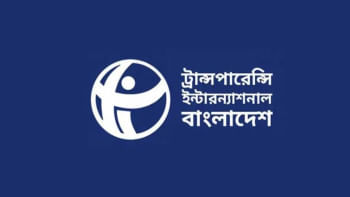Gridlock takes its toll
THIS is hardly a new topic and certainly not one that has not been covered before. Detailed studies now exist on precisely what damage is being caused to economic activities due to the horrendous traffic jams the city of Dhaka experiences on a daily basis. Whenever there is interaction with traffic management authorities they cite the usual causes -- too many vehicles on the road, failure to follow the rules, too few people in passenger cars, so on and so forth. But the reality of course is there are other reasons for the dreadful conditions on the road. That the capital city remains the hub of economic activity is one of them. It is also the epicentre of all major institutions including education, health and, ironically, industry.
Dhaka roads were never built to handle such traffic. The city has sprawled into a metropolis over the decades. Unregulated migration from rural areas and lax enforcement by city officials have led to unplanned growth that is simply not sustainable. The growth of the readymade garments factories in and around the city over the last three decades opened up opportunities for employment for the rural populace, and the city population has grown at an average of 10 percent over the years. Add to that the change in car import policy that opened up the doors of entry of reconditioned vehicles after 1996 and easy access to car loans by banking institutions. Only recently has the government changed the rules to make it more difficult to obtain car loans, which until recently was as high as 70 per cent.
By the time authorities realised that unplanned urbanisation was becoming a serious impediment, the damage had been done. With 15million or so people calling Dhaka their home, it is not at all unusual for a resident of Uttara to spend 3 hours on the road to get to the commercial hub Motijheel. That is 6 hours wasted on the road. With the city undergoing major infrastructure changes by means of “flyover” construction at major junctions like Rampura-Malibag, Satraasta-Mouchak, Moghbazar – Bangla Motor, and Shantinagar, the reasons for the gridlocks are not too surprising. Part of the problem is that various bodies and agencies like Local Government Engineering Division, RAJUK, the two separate city corporations (North and South), etc. are all implementing various projects independently of one another. There is no coordination and that merely adds to the mess we find ourselves in.
Recently the Asian Development Bank cited in one of its reports that the city's gridlock is causing a loss to the tune of 1-2 per cent in GDP growth rate. The Metropolitan Chamber of Commerce and Industry in a study stated that “relocation of manufacturing units, specially the apparel units, from Dhaka is also important to lessen the population pressure on the overpopulated city.” That translates into Tk200 billion a year loss in economic activity and approximately 8.16million working hours every day. However, is anyone in the driving seat remotely bothered about all this?
It does not seem so. Consider that billions of Taka is spent yearly on constructing roads all over the country without following proper procedures. According to a report published in English daily on August 25, apparently, political patronage and pressure to award contracts to contractors who come up with faulty designs is the name of the game. Hence no real project design to improve the road network is possible. And it is not only this but the fact that it takes, literally, years to get a plan approved by the authorities, adds to the woes of citizens. There is in fact, a Strategic Transport Plan that is supposed to serve as guideline for transportation projects. Yet with so much interference at various levels, it is little wonder that the plan is hardly put to good use. Of all the authorities and departments responsible for road construction, apparently only the Roads and Highways Department (RHD) is according to the said newspaper, “entitled to follow procedures, like – feasibility study, traffic study, etc, while planning a road, for assessing its economic viability.” While that looks very nice on paper, the reality is that “in many cases engineers concerned do not visit the spots and collect traffic data.”
We are informed that no less than six new major road infrastructure projects are in the offing. Given the rate of implementation of the current ones and the havoc they are causing to citizens, one can only shudder to think what will happen when even more projects get underway. And with water logging that has become a permanent feature at the slightest hint of a heavy downpour turns roads into harbingers of chaos. Potholed roads and dug roads covered up with sand turn into traps from which neither passenger nor heavy vehicles can escape from, merely adding to many more hours of gridlock. As per newspaper reports, RHD's own estimates show that half of its current projects will have to be revised “for delay in implementation.” It would be prudent to stick to the STP if we are ever to get out of this quagmire and move ahead.
The writer is Assistant Editor, The Daily Star.

 For all latest news, follow The Daily Star's Google News channel.
For all latest news, follow The Daily Star's Google News channel. 



Comments